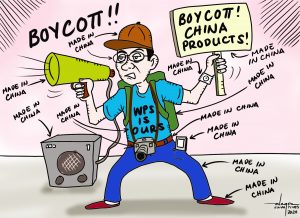Some years back there were efforts initiated by certain political leaders to divide Davao City into two or three local government units.
It was floated around by one of three congressmen of the city hoping that it would catch fire and snowballs as some kind of a mass desire among residents.
The move however, was immediately doused with cooled water by no less than the leadership of the city then under Mayor and now President Rodrigo Duterte.
About three decades since that idea died a natural death Davao City has grown extremely fast. No, not in terms of land area but in terms of its population, income and of course its economy.
The city’s economic growth has even become electric and eclectic with the assumption of its former mayor Duterte to the highest position of the land. Investors have come in droves competing for a share in Davao City’s boom.
Clearly observable is the rise of new residential, commercial and industrial enclaves in the outskirts of the city’s main business centers. While high-rise condominium buildings are now lording it over in the city’s urban skyline, residential subdivisions — low-end, middle-end and high-end — are sprouting like mushroom colonies in the city’s peripheries, including areas already about 20 to 30 kilometers away from downtown. Even villages that were considered hot-bed in the anti-government movement carried out by the rebel New People’s Army-Communist Party of the Philippines (NPA-CPP) a few years back like Mandug, Cabantian, Gatungan, as well as some interior barangays in Tugbok and Toril districts have evolved into proud hosts of new property development projects.
The Toril-Sirawan-Binugao stretch in the south and the Bunawan-Lasang-Tibungco-Mahayag quadrangle in the north of the city are now home to multi-billion peso industrial plants such as power generation firms, beverage bottling companies, poultry dressing plants, steel manufacturing, and other industries both light and heavy.
Because of the presence of these industries, migrants from nearby provinces and cities come to look for job opportunities. Indeed many, if not all, of them found their desired work in newly opened establishments as well as in businesses providing support services. As a consequence, in the last ten years or so Davao City’s population has ballooned to a new high.
This new level of the city’s economy can be unmistakably gauged through the yearly increase in its income based on the annual budget of the local government. For the current year the city’s budget is kissing the periphery of P8 billion. Next year, there is strong likelihood that Davao City will be proposing a budget possibly on the level of P9 billion, maybe a little lower, or perhaps even more.
With the present status of the city we are wondering if any of one of our congressmen, or perhaps one, two or three members of the Sangguniang Panlungsod, will be courageous enough to float the idea of revisiting the plan to divide Davao City into two new cities.
For us, it’s about time to give the under-developed areas of the second and third districts the opportunity to grow faster economically and physically, closer, or perhaps in step with the first district.
Yes, while it is admitted that development is now moving towards the suburban areas it cannot also be denied that the bigger portions encompassing the second and third districts are still very rural and do not have the amenities available in the central area which is the whole of district one.
Water services as well as efficient and faster telecommunications system are not found in most part of the rural communities.
In fact in some barangays barely 20 to thirty kilometers from the city proper, households are still dependent on the unreliable often unsanitary water system. Some areas roughly of similar distance do not have cellular phone signals, much more land lines.
So, it is not uncommon to see people with mobile phones climbing coconut trees or going to hilltops risking get struck by lightning just to explore possibility of getting communication contact.
It is our take that with so huge an area for the present city officials to attend to, it is not far-fetched that the farthest barangays and/or those that are located in the interior parts of the districts will get missed out in the delivery of services. These places could also escape the attention of the city officials since these are seldom visited, or the barangay executives are constrained with financial and time handicaps in going to the seat of the city government.
As we said, we are hoping for some brave souls among the ranks of our representatives in Congress including the Partylist ones like Bayan Muna’s Carlos Isagani Zarate, to initiate the “testing of the waters.” And we are wishing that some new crops in the City Council can take the cudgels for the many that are supportive of the city’s division into two or three but have opted to be silent for obvious reasons.

